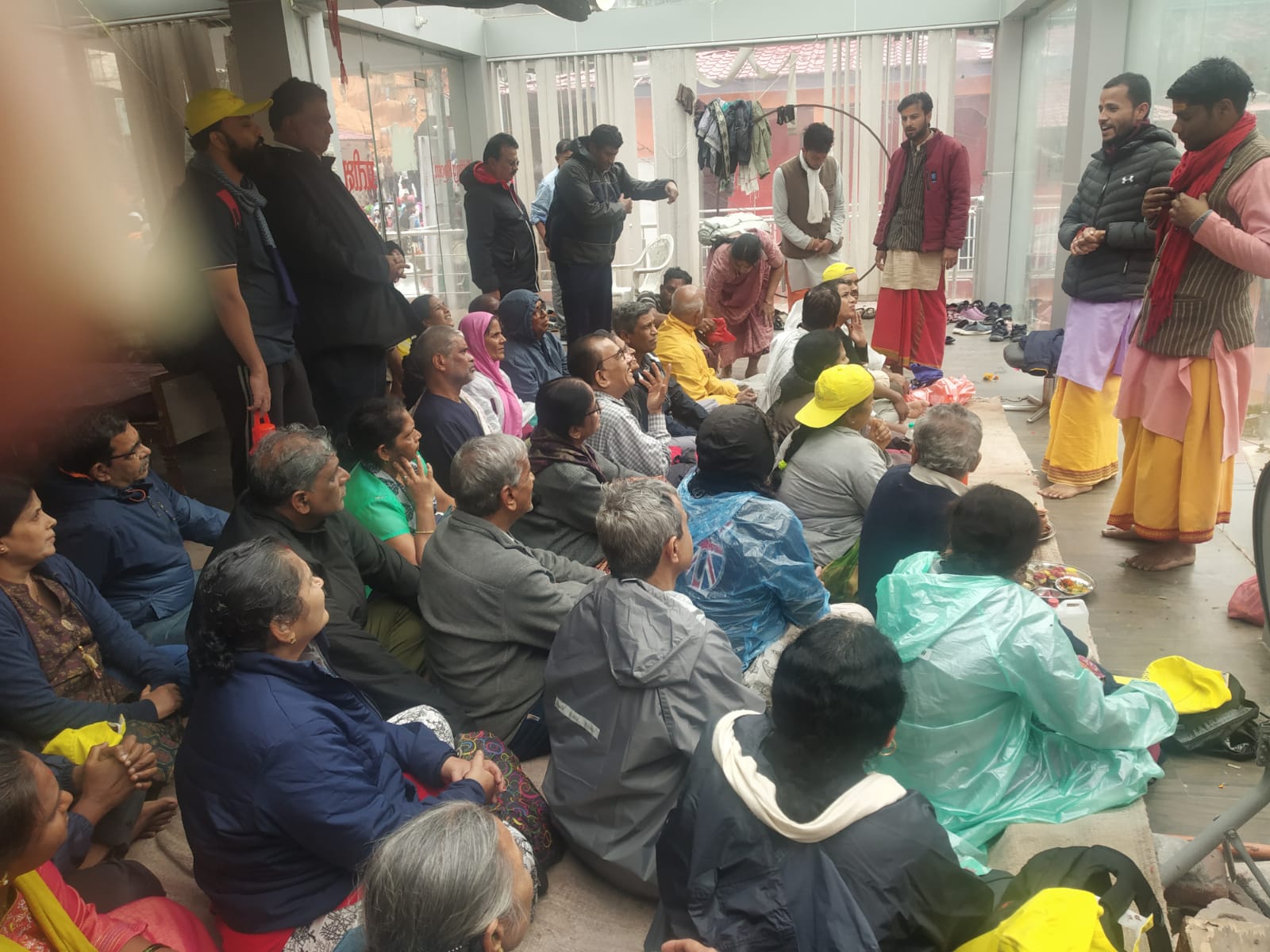
Our Yatris Doing Pooja In Gangotri
Gangotri is a town and a Nagar Panchayat (municipality) in Uttarkashi district in the state of Uttarakhand, India. It is 99 km from Uttarkashi, the main district headquarter. It is a Hindu pilgrim town on the banks of the river Bhagirathi – the origin of the river Ganges. The town is located on the Greater Himalayan Range, at a height of 3,100 metres (10,200 ft). According to popular Hindu legend, Goddess Ganga descended here when Lord Shiva released the mighty river from the locks of his hair.
Gangotri is one of the four sites in the Chota Char Dham pilgrimage circuit. It is also the origin of the Ganges river and seat of the goddess Ganga. The river is called Bhagirathi at the source and acquires the name Ganga (the Ganges) from Devprayag onwards where it meets the Alaknanda. The origin of the holy river is at Gaumukh, set in the Gangotri Glacier, and is a 19 km trek from Gangotri. The original Gangotri Temple was built by the Nepalese general Amar Singh Thapa. The temple is closed from Diwali day every year and is reopened on Akshaya Tritiya. During this time, the idol of the goddess is kept at Mukhba village, near Harsil. Ritual duties of the temple are supervised by the Semwal family of pujaris. These pujaris hail from Mukhba village.
Places to visit near the Gangotri Temple
Bhagirath Shila is believed to be the holy rock where King Bhagirath prayed to Lord Shiva.
Pandava Gufa, located 1.5 km from Gangotri, is the place where the Pandavas are believed to have meditated and rested en route Kailash. Pilgrims will have to trek up to the Pandava Gufa.
In the pilgrimage journey of Chota Char Dham, Gangotri is often visited after Yamunotri (located on the western region of Garhwal Hills). Pilgrims generally make Uttarkashi as their base camp. The time taken from Uttarkashi to Gangotri temple is about 4 hours by road.
A temple dedicated to Goddess Ganga is located near a sacred stone where King Bhagiratha worshipped Lord Shiva. According to Hindu culture, Goddess Ganga took the form of a river to absolve the sins of King Bhagiratha's predecessors, following his severe penance of several centuries. Bhagiratha Shila is a sacred slab where king Bhagiratha meditated. Ganga is believed to have touched earth at this spot. According to another legend, Pandavas performed the great ‘Deva Yagna‘ here to atone the deaths of their kinsmen in the epic battle of Mahabharata. Hindus believe that performing the ancestral rites on the banks of Bhagirathi frees the spirit of the ancestor from the cycle of rebirth and a holy dip in its waters cleanses sins committed in the present also past births.
The Gangotri temple opens on the auspicious day of Akshaya Tritiya which falls in the month of May and closes on Yama Dwitiya or Bhai Dooj which falls in the month of November. The Gangotri temple remains closed for the rest of six months. The Goddess shifts to the village Mukhba during the winter months. In the month of May, Ganga Dussehra is celebrated with great fanfare as the day of the birth of Ganga.

